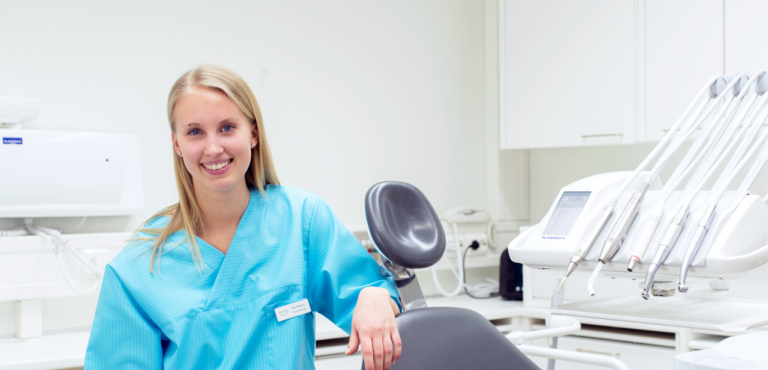General anaesthesia can be used in severe dental anxiety cases where treatment with sedatives and/or nitrous oxide has not been successful in the past. It can also be used for paediatric patients or if the dental condition requires extensive or urgent treatment.
In general anaesthesia, all teeth are treated at once. Using this strategy, several failed attempts and a long-term dental anxiety can be avoided. Treatment planning starts at the general dentist’s surgery.
Download the dental anxiety form
Carrying out treatment
Before treatment, your general dentist will check your teeth and take an X-ray of your mouth. The X-ray helps the dentist to further identify areas needing treatment, and the radiologist will also be heard. A written estimate of the cost and a treatment plan will be delivered to the patient.
When using general anaesthesia, the care team will consist of an anaesthetist and a nurse anaesthetist, a dentist and a dental assistant. Also, if needed, a specialist dentist such as an oral and maxillofacial surgeon or prosthetist can be present.
Anaesthesia and care are centrally coordinated, and we’ll let you know who to turn to should you have any questions or concerns. Before you come for your anaesthesia treatment, we will give you written instructions on things you need to consider. You’ll also have the possibility to discuss your treatment in advance with an anaesthetist.
After the treatment, you’ll rest in the recovery room until the anaesthetist decides you’re ready to be discharged. A nurse will be present in the recovery room to monitor your condition throughout your treatment. An accompanying person is needed; you will not be allowed to leave the clinic unescorted after the treatment. Treatments done under general aesthesia do not require an overnight stay at the clinic.
Nitrous oxide in dentistry
The advantage of nitrous oxide, an anaesthetic gas, is that its effect both starts and ends quickly.
Before treatment with nitrous oxide, the patient’s teeth are checked in a separate short visit for treatment planning and cost estimation.
During treatment, nitrous oxide is administered through the nose at a steady rate. The dosage is determined by a dentist trained in nitrous oxide treatments. It takes five minutes for the nitrous oxide to leave the body, whereas patient recovery takes about half an hour. Nitrous oxide reduces patient stress and fear, and suppresses the swallowing reflex.
